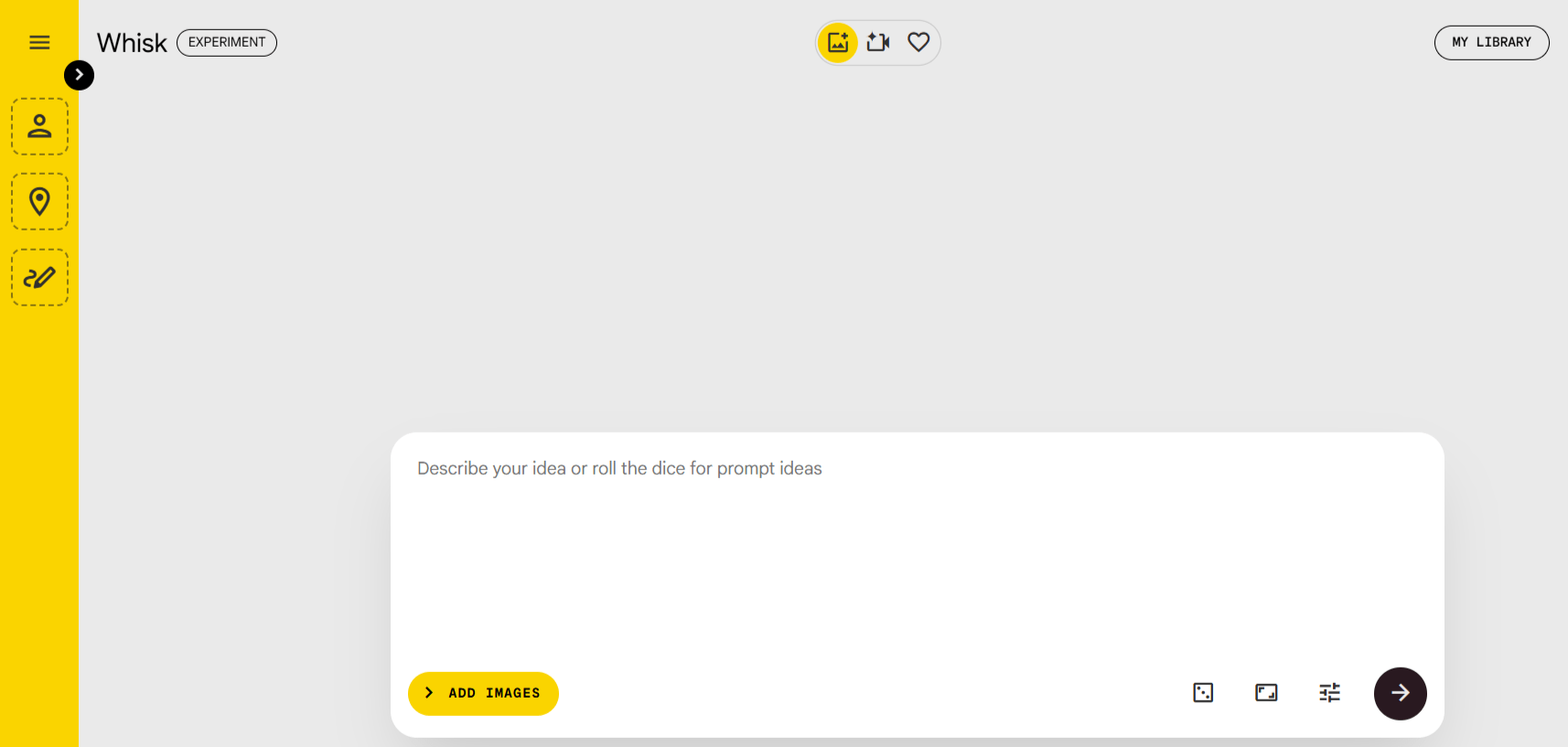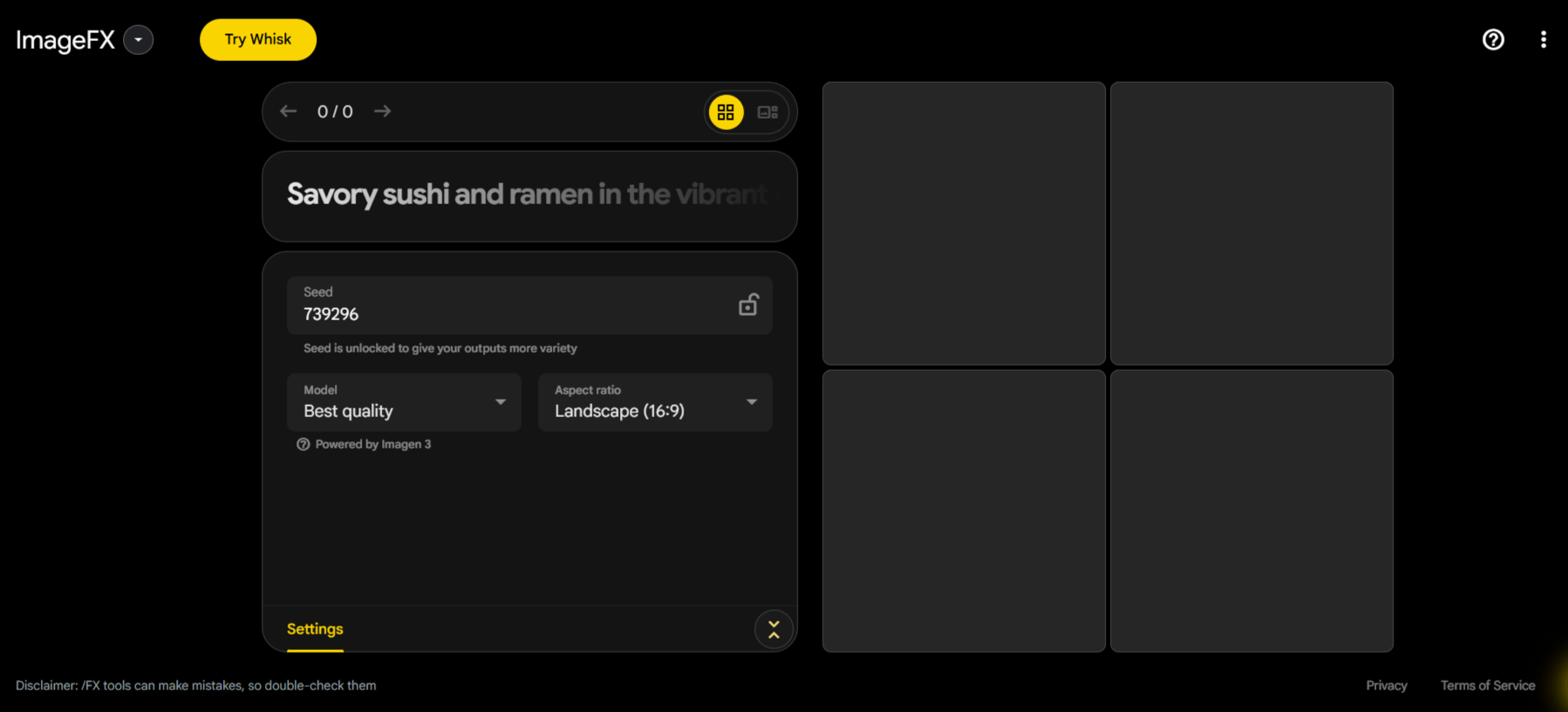Google Imagen

Imagen AI Key Features and Capabilities
Imagen AI, especially its latest versions, comes packed with impressive features:
Exceptional Image Quality
It generates stunningly realistic images with remarkable clarity in fine details, such as intricate fabrics, water droplets, and animal fur.
Imagen excels in both photorealistic and abstract styles.
Images can be created in a range of aspect ratios and up to 2k resolution, making them suitable for printing or presentations.
The text to image generator offers superior lighting effects and composition.
Advanced Spelling and Typography
Imagen 4 is significantly better at spelling and typography, making it easier to create content like greeting cards, posters, and comics.
The image model supports longer text strings and new layouts and styles.
Enhanced Prompt Comprehension
Imagen 3 and 4 are capable of interpreting complex prompts much more easily than earlier models.
They comprehend prompts written in natural, everyday language, reducing the need for complex prompt engineering.
The models are trained on detailed data, allowing them to capture precise characteristics and even generate images with specific camera angles or compositions from long, complex prompts.
Speed and Efficiency
Imagen 4 includes a fast variant that is up to 10 times faster than Imagen 3, allowing you to explore ideas more quickly. This speed, combined with precision, enables efficient content creation.
Advanced Editing Functionalities
Users can refine and customize images using simple text prompts.
It supports mask-based editing, allowing you to modify specific areas of an image (e.g., changing a product's background while keeping the subject intact).
Images can be upscaled to meet various sizes and resolution requirements.
Enhanced Customization Options
Imagen AI offers unprecedented control over image appearance. Businesses can embed brand-specific elements like logos, brand styles, and unique product details into generated images, which is great for marketing.

How Imagen Works (The Technology Behind It)
Imagen uses two core technologies:
1. Transformer-based Large Language Models (LLMs)
Notably, T5, to understand text and then encode that text for image synthesis. This is what allows it to interpret your detailed prompts so well.
2. Cascaded Diffusion Models
These models are responsible for generating the high-fidelity images. Imagen AI image generator typically generates images in three stages, starting from a base resolution (64x64) and then upsampling to higher resolutions (256x256 and 1024x1024).
Imagen AI Availability, Access, and Pricing
Imagen is primarily accessible through Google's AI platforms:
Google Cloud's Vertex AI Platform: This is where organizations and developers can access Imagen 3 and Imagen 4 (including fast and ultra variants) for their business operations and creative workflows. Access usually requires filling out a request form.
Gemini App: Imagen 4 is available today in the Gemini app. Imagen 3 is also available to free Gemini users, and advanced versions of Gemini provide access to Imagen 3.
Whisk: Imagen 4 is also available in Whisk.
Google Workspace: Imagen 4 is integrated across Workspace applications like Slides, Vids, and Docs.
Flow: Google's new AI filmmaking tool, Flow, which incorporates Imagen, is available for Google AI Pro and Ultra plan subscribers in the U.S., with more countries coming soon.
Google AI Studio: You can also try Imagen image generator in Google AI Studio.
Regarding pricing, there is no pay-per-generation pricing model for Imagen itself beyond its availability through Google AI Pro/Ultra plans or Vertex AI.
For enterprise users on Vertex AI, it's part of a cloud service, which typically involves usage-based pricing.
For consumers, access is through Gemini's free tier (with limitations) or paid subscriptions like Gemini Advanced, Google AI Pro, and Ultra plans.
Use Cases: Bringing Ideas to Life
Imagen's capabilities open up different applications across various industries:
Marketing and Advertising: Generate photorealistic images and videos for campaigns, allowing marketers to quickly produce customized, brand-aligned content that enhances engagement and conversion rates.
Product Design: Design teams can rapidly visualize concepts and prototypes by generating images reflecting specific product features, materials, or styles, accelerating development and decision-making.
E-Commerce: Online retailers can create compelling product images, showcasing products in multiple settings, colors, or styles to enhance the online shopping experience and potentially increase sales.
Content Creation for Social Media: Social media managers can generate eye-catching, high-resolution, and platform-optimized visuals for posts, stories, and advertisements, maintaining a consistent and engaging online presence.
Entertainment and Gaming: Generate concept art, character designs, and immersive environments, accelerating game development and supporting a more dynamic creative process.
Filmmaking: With tools like Flow, which uses Imagen, visual storytellers can weave cinematic films with sophisticated control over characters, scenes, and styles using natural language descriptions.

Responsible AI and Safety Measures
Google emphasizes responsible AI, and Imagen is designed with this in mind:
Built-in Safety Filters: Both text prompts (inputs) and generated or uploaded images are assessed against safety filters for categories like violence, sexual content, derogatory content, and toxicity. These filters aim to block content that violates Google's Acceptable Use Policy (AUP), Generative AI Prohibited Use Policy, or Google's AI Principles.
SynthID Digital Watermarking: All images produced with Imagen contain invisible digital watermarks embedded through Google DeepMind’s SynthID technology. This helps identify AI-generated content, reducing the chances of misinformation and misattribution.
SynthID Detector: A verification portal called SynthID Detector has been launched to help people identify AI-generated content by uploading a file.
Configurable Safety Filter Thresholds: Developers using Imagen on Vertex AI can choose how aggressively to filter sensitive content by adjusting the safetySetting parameter.
Pros
Strong Safety Commitment: Google's commitment to responsible AI, including SynthID watermarking and content filters, helps address concerns about misinformation and harmful content.
Integration with Google Ecosystem: Its availability across Gemini, Whisk, Vertex AI, and Workspace makes it accessible to a wide range of users and developers.
Excellent for Specific Details and Styles: It excels at capturing fine details, photorealistic scenes, and diverse artistic styles when given precise prompts.
Cons
"Professional" Look: Images often have a very polished, "photoshopped" or "picture-perfect" aesthetic, frequently with a bokeh effect. It currently struggles to create more casual, raw, or unedited-looking photos.
Incomprehensible Prompts: If you give Imagen nonsensical prompts (like emojis or random character strings), the outputs can be unpredictable.
General Advice for Users
To get the best results from Imagen, especially for developers, effective prompting is key. You should:
Be precise and detailed when describing your subject and its attributes, including distinct details and actions.
Specify the environment or setting, the desired artistic style (e.g., photorealistic, vector art, impressionism), and the intended mood or atmosphere.
Include parameters for the camera angle and compositional elements to guide the AI model closer to your vision.
Imagen AI Alternatives

